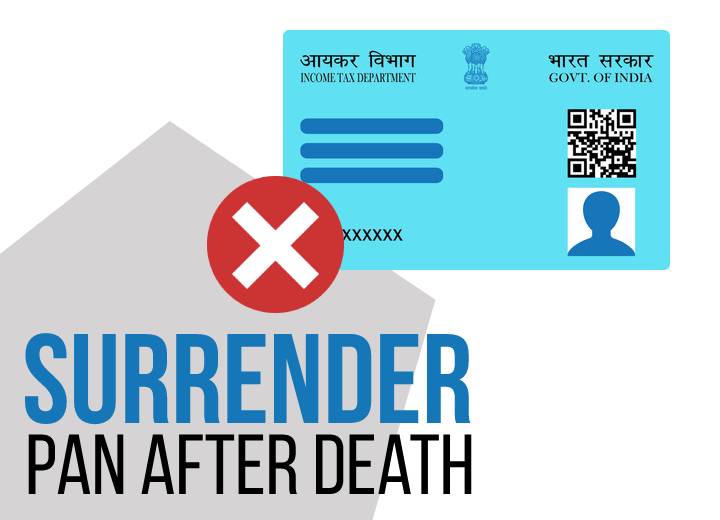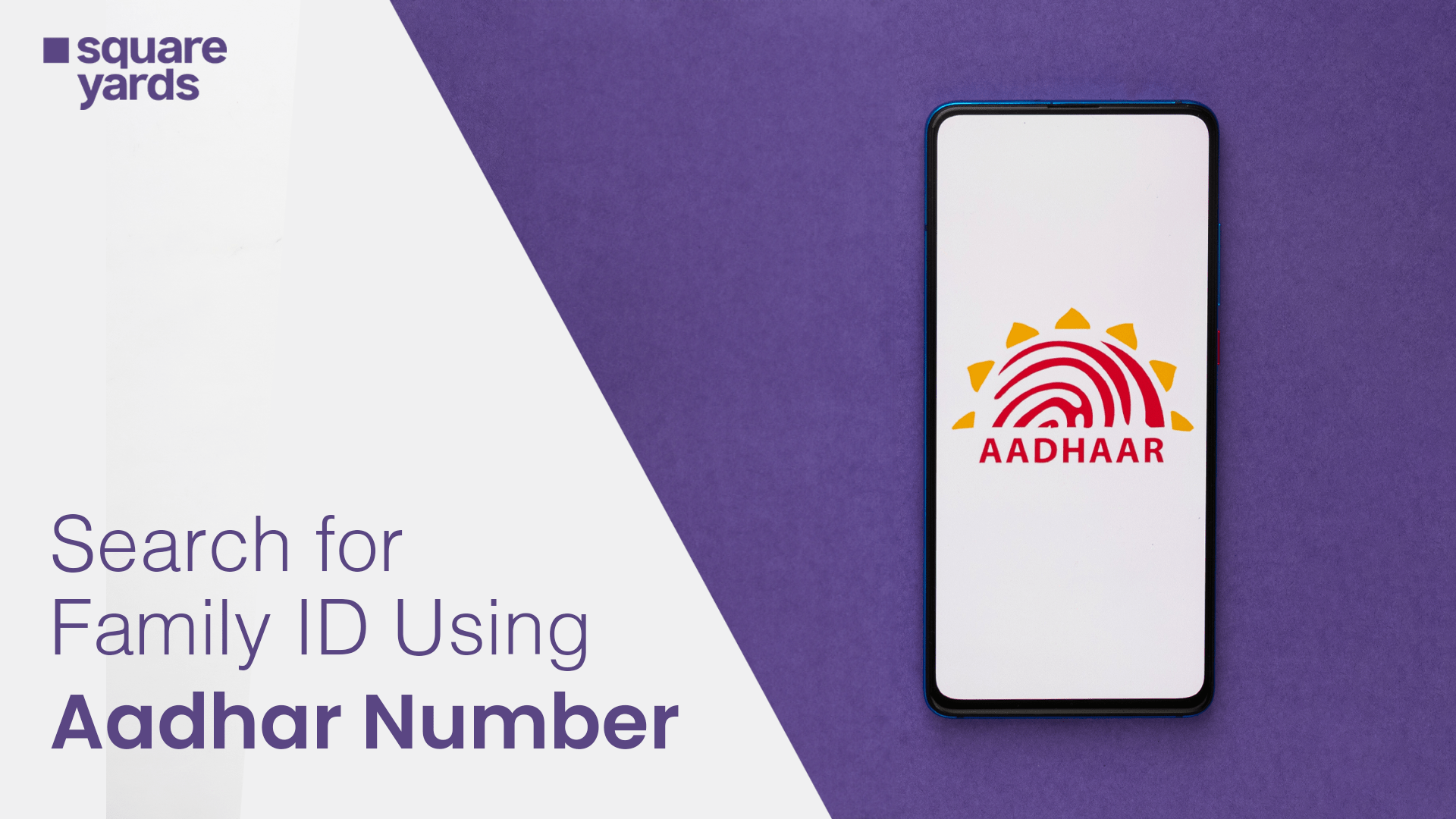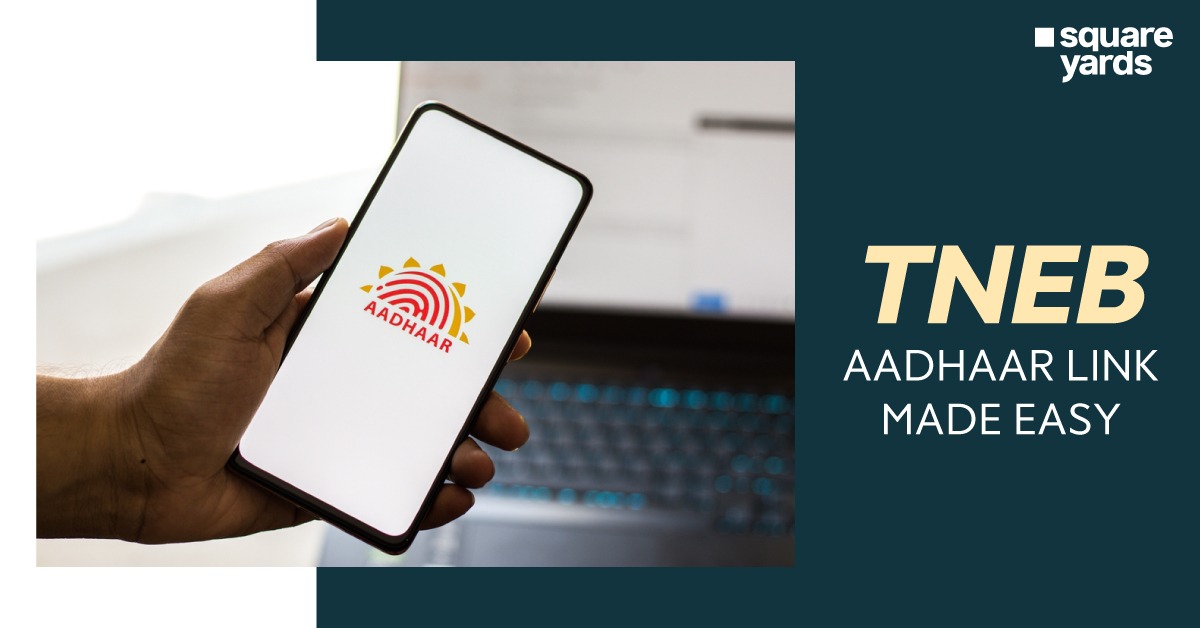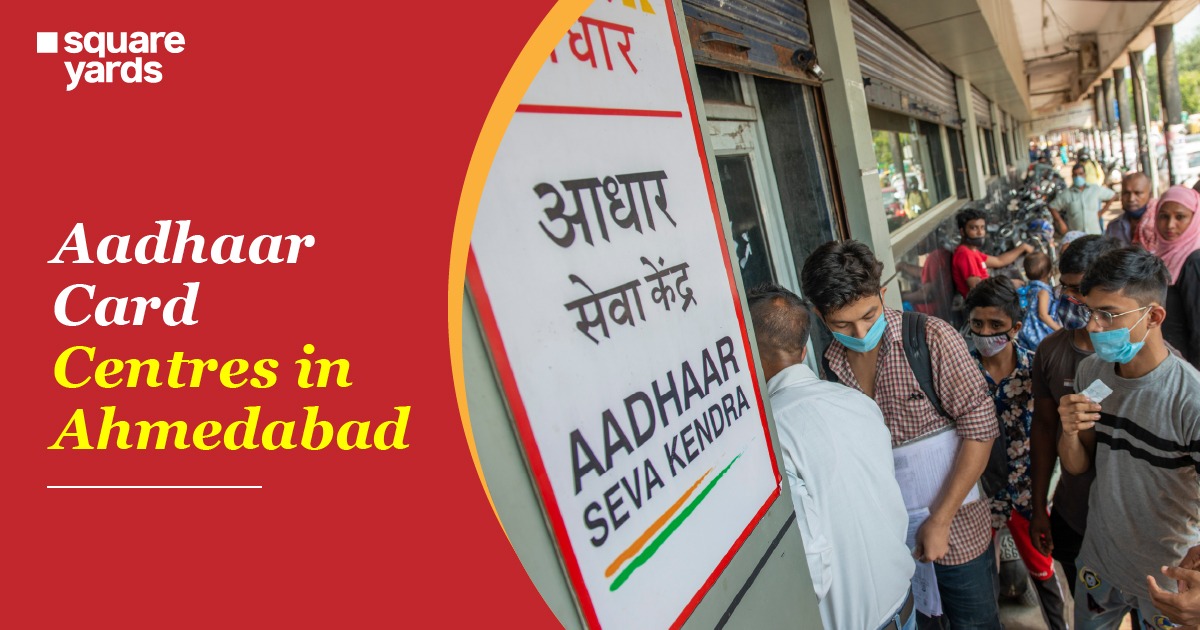Curious how to surrender PAN after the death of an individual?
A PAN card of a person is not considered valid after their death. The representative or legal heir has to surrender their PAN card to the income tax authorities in such cases. This can be done after filing the ITR of the deceased in the same year of the PAN card holder’s demise. If not, the representative has to bear the brunt via huge penalties and fines.
So, in this article, let’s get to know in detail how you can file an ITR and surrender the PAN card after the death of an individual.
Table of contents
- How to Surrender PAN Card After Death?
- Points to Remember Before Cancelling or Deactivating the PAN Card
- Documents Needed for Filing as Legal Heir
- What Happens If Income Tax Authorities Are Not Informed about the Deceased?
- How to File the ITR of the Deceased PAN Cardholder?
- Frequently Asked Questions (FAQs)
How to Surrender PAN Card After Death?
There is no provision to surrender PAN online. You can only surrender the PAN card after the death of a person offline as a legal representative by visiting the nearest income tax department. However, before surrendering the PAN card, ensure that all taxable dues of the departed person have been cleared.
Via Income Tax Department’s Web Portal:
Surrendering a PAN card online is a straightforward process. First, visit the official Income Tax Department’s e-filing website. Here, you’ll need to log in using your credentials. If you’re surrendering a duplicate PAN card, fill in details like your full name, date of birth, and father’s name, along with contact information such as phone number and email address. Specify the PAN card number you wish to keep and the one(s) you want to cancel. Submit this information online to initiate the surrender process. Remember, this method is convenient and saves you the hassle of physical paperwork.
Via Tin NSDL’s Portal:
NSDL (National Securities Depository Limited) offers an alternative online avenue for PAN card surrender. Visit the Tin NSDL portal and navigate to the PAN section. Here, you’ll find an option for making changes or cancelling your PAN. Fill in the required details as you would on the Income Tax Department’s portal. This includes personal and contact details and information about the PAN card(s) to be surrendered. NSDL’s process is user-friendly and efficient, allowing for a hassle-free surrender of your PAN card.
Points to Remember Before Cancelling or Deactivating the PAN Card
Before you proceed with deactivating or cancelling your PAN card, it’s crucial to understand the implications. Ensure you don’t have any pending tax dues or legal obligations linked to the PAN card you intend to surrender. It’s also important to check whether all your financial accounts, like bank accounts and investments, are associated with the correct PAN. Remember, holding multiple PAN cards is illegal and can lead to penalties, so ensure you retain the correct one.
Documents Needed for Filing as Legal Heir
Filing an Income Tax Return (ITR) as a legal heir requires specific documents. You need:
a) A copy of the Death Certificate.
b) The deceased’s PAN Card copy.
c) Your PAN Card copy, self-attested.
d) A Legal Heir Certificate or equivalent proof.
e) A notarized affidavit for filing the ITR on behalf of the deceased.
Collect the necessary financial documents of the deceased, such as bank statements, Form 16, and 16A. These documents are crucial for accurately calculating and filing the ITR. If the ITR is not filed, the legal heir might face penalties proportional to the assets received from the deceased. For instance, if the tax liability is Rs 15 lakh but the heir receives assets worth Rs 10 lakh, they are only liable for the latter amount. To avoid complications and penalties, it’s advisable to file the ITR promptly and accurately
What Happens If Income Tax Authorities Are Not Informed about the Deceased?
If the authorities are not informed about the deceased or the legal heir does not file their ITR before the financial year ends then as per Section 270A of the Income Tax Act, they may have to pay penalties equal to 50% of the tax incurred by the deceased taxpayer. Prosecution under Section 276CC may also be initiated for non-compliance.
How to File the ITR of the Deceased PAN Cardholder?
The first step to file the ITR of a deceased person is to register yourself as their legal heir or representative.
Register Yourself As a Legal Heir
Step 1: Visit the official website of the Income Tax Department and log into the e-filing portal.
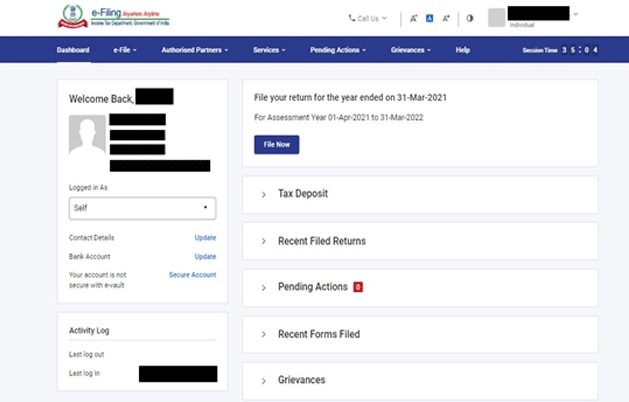
Step 2: Choose the option of Authorised Partners and select the Register as a Representative option.
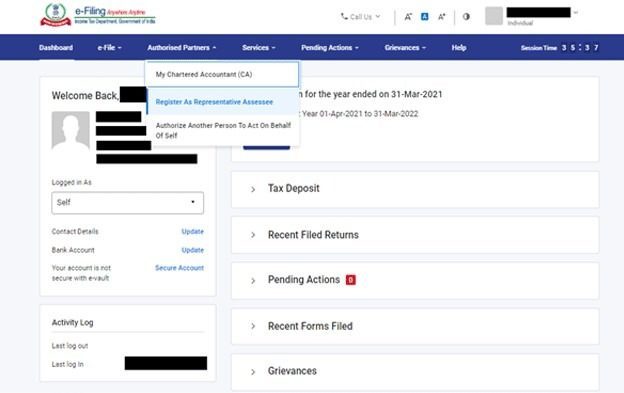
Step 3: Click on Let’s Get Started to create a new Request.
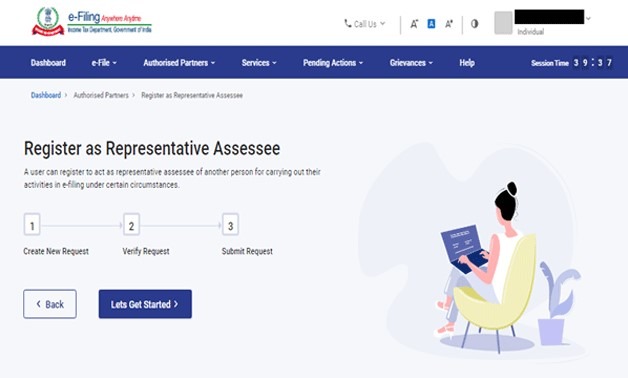
Step 4: Press Create New Request.
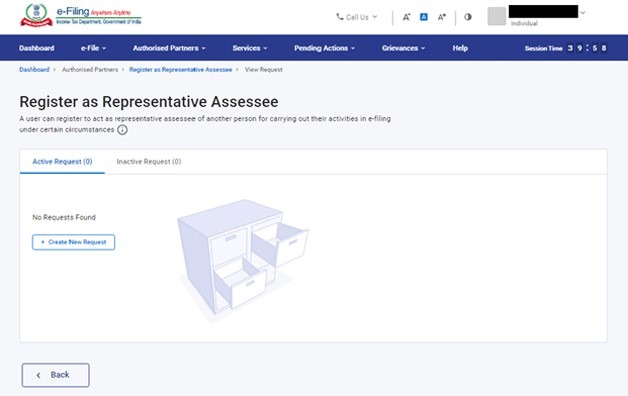
Step 5: You will notice a dialogue box appearing on the screen. Select the Category of Assessee you are representing. Choose the option Deceased (Legal Heir) from the drop-down menu.
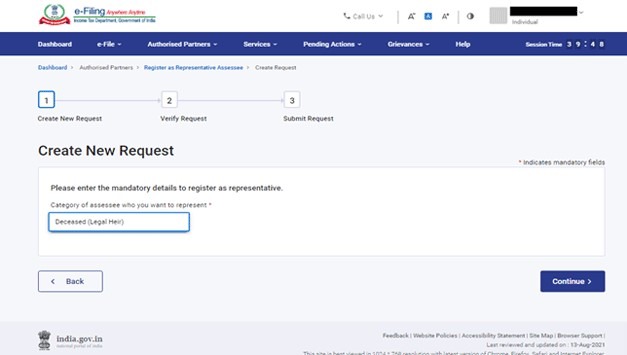
Step 6: Fill in all the required information as asked.
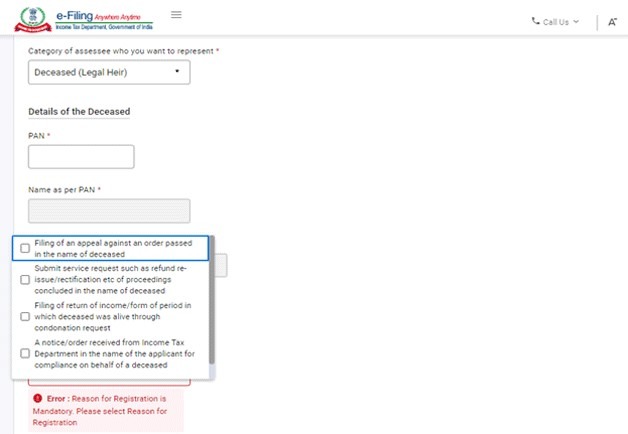
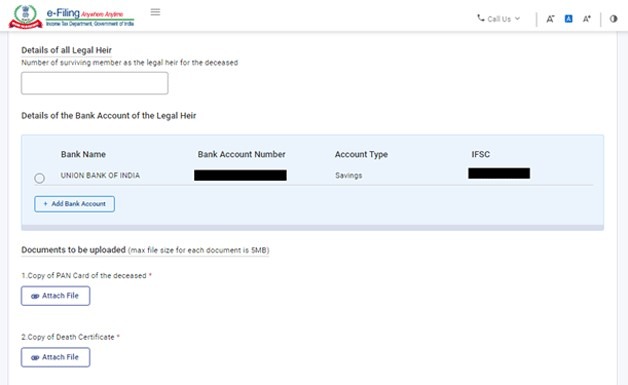
Step 7: Upload the documents. Make sure the file size does not exceed the limit of 5MB.
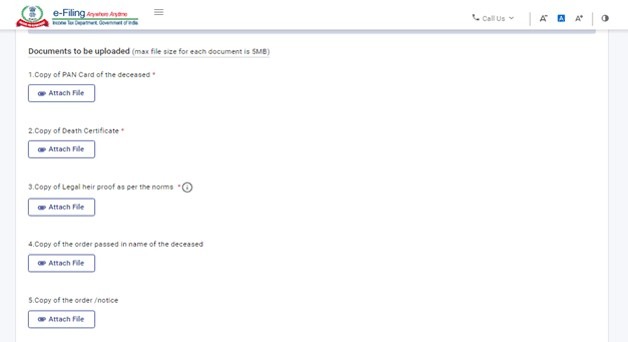
Step 8: Hit the Proceed button and then Verify the Request.
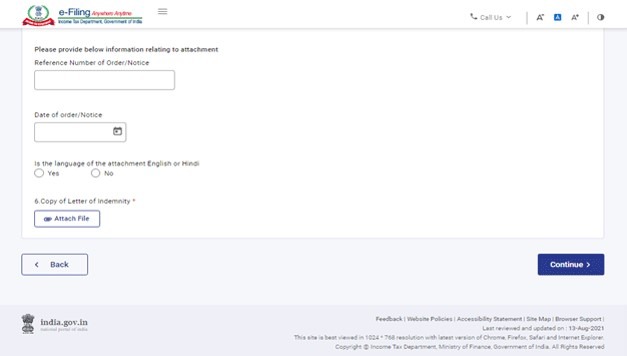
Step 9: Finally, press Submit Request. A message will display on your screen within seconds stating your successful registration as a legal heir.
After registering yourself as a legal heir, you can follow the below-written steps to file the ITR.
Steps to File the ITR of the Deceased
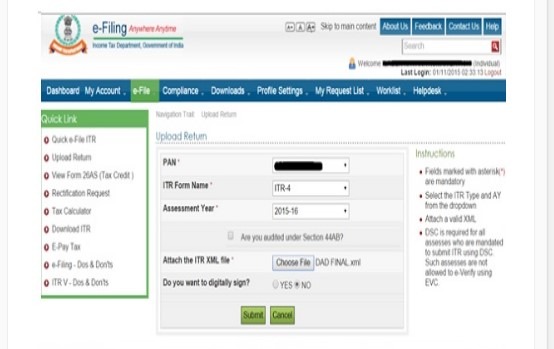
Step 1: Download the ITR form relevant to the departed person and fill it in to generate the XML File.
Step 2: Visit the income tax official website.
Step 3: Use your credentials to log in to the online portal.
Step 4: Visit the e-file option and upload the return of the deceased person.
Step 5: You have to do the following activities and choose the XML file:
- Select the Permanent Account Number card of the deceased person.
- Select the ITR Form (You have to upload).
- Choose the Assessment Year.
Step 6: Upload the XML file.
Step 7: Sign the ITR digitally as a legal heir using the Digital Signature Certificate.
Step 8: Hit the Submit option and you have filed the ITR of the deceased. Now, wait for some time till the Assessee Officer validates the documents.
Frequently Asked Questions (FAQs)
The documents one has to submit to file an ITR for the deceased person include a copy of the death certificate and PAN card of the departed person, the applicant’s PAN Card as the legal heir, a certificate indicating you as a legal heir and a notarized affidavit. As a legal heir, if you do not file the ITR of the departed person, the Income Tax Department can impose the penalty on both you and the deceased person. However, this will lead to limited access to the assets you receive from the late individual’s inheritance. According to legal experts, there is no penalty under the law in any official document. However, as a responsible citizen, you must inform the authorities so that no one can misuse the documents of the deceased person. The legal heir must file the ITR of the departed person the same way as when they were alive. Also, all the income and claims to any deductions and credits must be up to date. If your request is rejected, there must be a valid reason, like errors in information or wrong document submission. Therefore, we suggest you rectify the issue or submit the correct documents as early as possible. The approval or rejection time depends upon the time an Assessing Officer takes for validating the documents. The validation gets completed within 15 days maximum. But sometimes, due to technical issues, the IT online portal can take more than this stipulated time frame. Yes, a legal heir can e-verify the documents using their registered mobile number. And, in the beginning, they can fill in the Aadhar details of the deceased person. What documents are required for filing the ITR of the deceased person?
What happens if ITR is pending after the death of the PAN cardholder?
What if you do not inform the authorities about the death?
How to pay taxes on a deceased person?
Why was my request rejected for filing the ITR of my deceased person?
In how much time the ITR of a dead person will be accepted?
Can an individual file ITR using the Aadhar of a deceased person?


